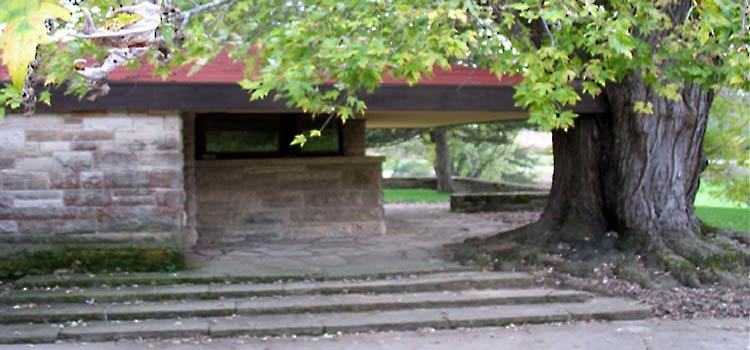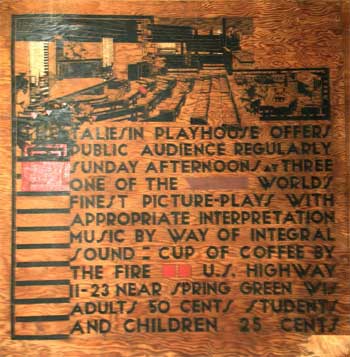Wright's earliest design commissions were for family. In the case of Hillside School, his two aunts' day school was increasing enrollment as the surrounding community thrived, and they allowed the young (barely out of his teens) architect to experiment with "breaking the box". In contrast, the rest of the architectural world was still thoroughly absorbed in the Victorian era, the Beaux Artes, and Classic Revival styles of the late 1800's.
|
|
| Today the Taliesin Frank Lloyd Wright School of Architecture occupies the whole of the Hillside School complex. | |
(above) The daylit Drafting Room -- for teaching, production, and presentations. Wright conceived of the space as an abstracted forest, the supporting trusses as tree-trunk and branches that filter and soften the sunlight above. Unheatable in WIsconsin winters, the tables are bare of the computers that the students now use for designing and drawing. |
|
| Wright famously hated (and therfore, arguably, deeply misunderstood) cities. He called his new city planning concept Broadacre City -- each family lived on an acre of land. This 12 foot x 12 foot handmade model travelled with him around the country as he gave lectures. Today it is easy to see this concept as essentally urban sprawl. However accurate, that assessment ignores the underpinning of many of Wright's utopian ideas, in much the same way that his affordable Usonian Home design concepts were dumbed-down to became the post-war ranch house. | |
(above) The Theater, mothballed for the winter, with the wonderful abstract mural-curtain (recently restored) packed away, and with repairs ongoing. In Wright's time, the Taliesin Fellowship staged plays, presented concerts and hosted luminaries from around the world, and it still does. (below) The delightful entrance portico to the Theater. |
We discovered that the Theater also opened to the public for inexpensive movies on Sundays. |
 |
|



 Comments? lou@designcoalition.org
Comments? lou@designcoalition.org